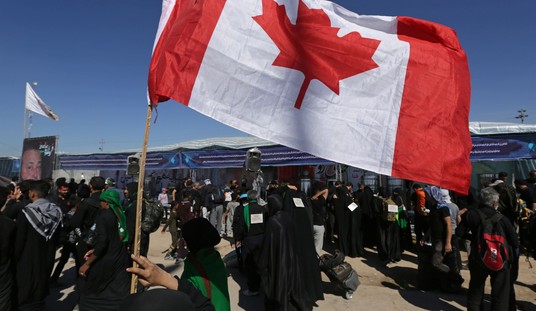Does the US and China have an interim agreement to retreat from its bruising trade war? Earlier this week, Donald Trump declared a diplomatic victory, and pledged a signing ceremony at the White House to nail it down.
https://twitter.com/realDonaldTrump/status/1212014713808273410
The later date remains ambiguous, but then again, so does the earlier date. The Washington Post reports that neither side has yet to release any text for Phase One:
But even though the White House said a deal was reached more than two weeks ago, neither side has released the exact wording of their agreement. Still, the announced deal has been enough to lift financial markets because many investors feel encouraged about the direction of the talks.
U.S. and Chinese negotiators said earlier this month they had reached a “phase one” agreement, and Trump agreed not to impose new tariffs on an additional $160 billion in Chinese imports.
The president also said on Twitter on Tuesday that he would be going to Beijing for “phase two” of negotiations at a later date. The initial deal left unresolved many of the most contentious issues the White House has raised with China, such as China’s heavy domestic industrial subsidies and technology-related provisions.
Not only has neither side released the terms of the deal, China won’t even confirm dates. Right up to this morning, Beijing is avoiding any commitment to attending a White House meeting at any specific time, let alone January 15th. However, they are also sending public signals of satisfaction with the Phase 1 deal:
Chinese Ministry of Foreign Affairs spokesman Geng Shuang said Thursday he has no new information on the trade deal, and didn’t comment on the signing. He repeated that he hoped the U.S. will do more to build mutual trust.
Despite the lack of clarity on the signing date, Beijing is still indicating it also wants the deal. A commentary on the front page of People’s Daily on Tuesday said, “it is every one’s wish that China and the U.S. will sign the phase one agreement.”
The deal, announced Dec. 13, sees the U.S. suspending plans for new tariffs on $160 billion of Chinese imports including smart-phones and toys and reducing some existing levies. China agreed to increase its purchases of American agricultural products and has made new commitments on intellectual property protections, forced technology transfers by U.S. companies and currency practices. The move at least temporarily calms fears of an escalating trade war between the world’s two largest economies.
The precise terms of the 86-page agreement have not been revealed. U.S. Trade Representative Robert Lighthizer said Dec. 13 he expected to sign the accord together with his Chinese counterpart, Vice Premier Liu He, in early January in Washington, and that it would be released publicly then.
So what’s the hold-up on an announcement? Neither side has much trust in the other at this point, which means that both may need to see more than the usual build-up of positive spin before making a commitment. Earlier this week, the White House’s Peter Navarro took an unusually optimistic tone on the new agreement, in what might have been a signal that the China hardliners in Trump’s inner circle won’t press him for more concessions in the final negotiations:
Navarro’s “put that one in the bag” might be a good description of the terms, but maybe not yet of an agreement just yet. Trump and Xi Jinping have yanked the rug out from underneath each other at different times during this sequence, and this might be yet another opportunity for one side to pull it again for further concessions.








Join the conversation as a VIP Member